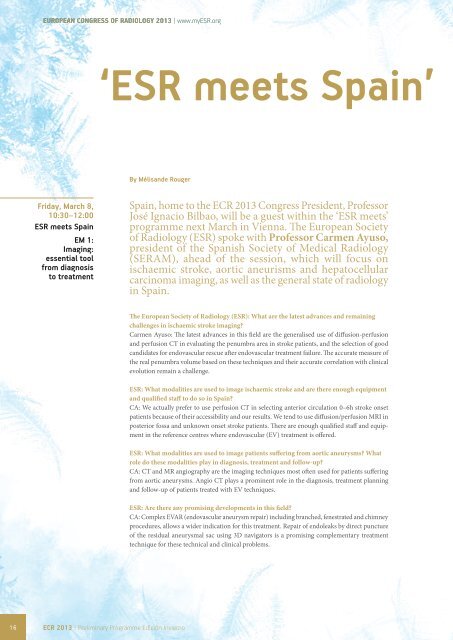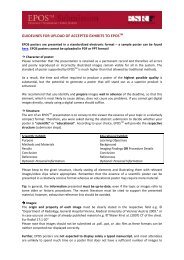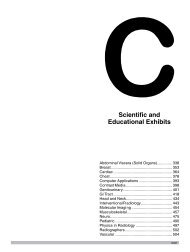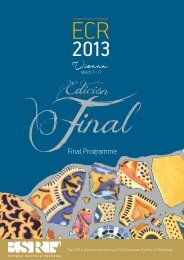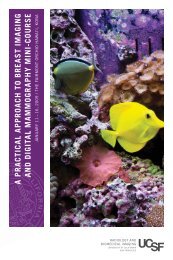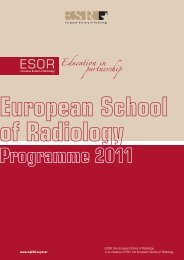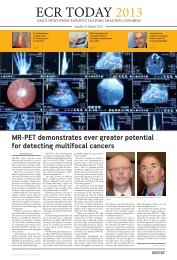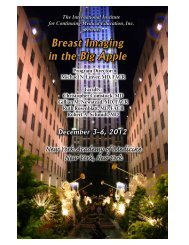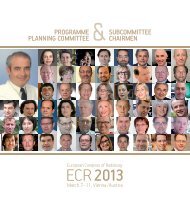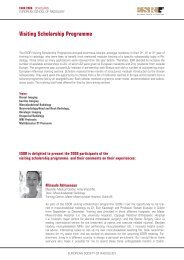New Horizons - myESR.org
New Horizons - myESR.org
New Horizons - myESR.org
- No tags were found...
Create successful ePaper yourself
Turn your PDF publications into a flip-book with our unique Google optimized e-Paper software.
EUROPEAN CONGRESS OF RADIOLOGY 2013 | www.<strong>myESR</strong>.<strong>org</strong>‘ESR meets Spain’By Mélisande RougerFriday, March 8,10:30–12:00ESR meets SpainEM 1:Imaging:essential toolfrom diagnosisto treatmentSpain, home to the ECR 2013 Congress President, ProfessorJosé Ignacio Bilbao, will be a guest within the ‘ESR meets’programme next March in Vienna. The European Societyof Radiology (ESR) spoke with Professor Carmen Ayuso,president of the Spanish Society of Medical Radiology(SERAM), ahead of the session, which will focus onischaemic stroke, aortic aneurisms and hepatocellularcarcinoma imaging, as well as the general state of radiologyin Spain.The European Society of Radiology (ESR): What are the latest advances and remainingchallenges in ischaemic stroke imaging?Carmen Ayuso: The latest advances in this field are the generalised use of diffusion-perfusionand perfusion CT in evaluating the penumbra area in stroke patients, and the selection of goodcandidates for endovascular rescue after endovascular treatment failure. The accurate measure ofthe real penumbra volume based on these techniques and their accurate correlation with clinicalevolution remain a challenge.ESR: What modalities are used to image ischaemic stroke and are there enough equipmentand qualified staff to do so in Spain?CA: We actually prefer to use perfusion CT in selecting anterior circulation 0–6h stroke onsetpatients because of their accessibility and our results. We tend to use diffusion/perfusion MRI inposterior fossa and unknown onset stroke patients. There are enough qualified staff and equipmentin the reference centres where endovascular (EV) treatment is offered.ESR: What modalities are used to image patients suffering from aortic aneurysms? Whatrole do these modalities play in diagnosis, treatment and follow-up?CA: CT and MR angiography are the imaging techniques most often used for patients sufferingfrom aortic aneurysms. Angio CT plays a prominent role in the diagnosis, treatment planningand follow-up of patients treated with EV techniques.ESR: Are there any promising developments in this field?CA: Complex EVAR (endovascular aneurysm repair) including branched, fenestrated and chimneyprocedures, allows a wider indication for this treatment. Repair of endoleaks by direct punctureof the residual aneurysmal sac using 3D navigators is a promising complementary treatmenttechnique for these technical and clinical problems.16ECR 2013 | Preliminary Programme EdiciÓn Invierno


